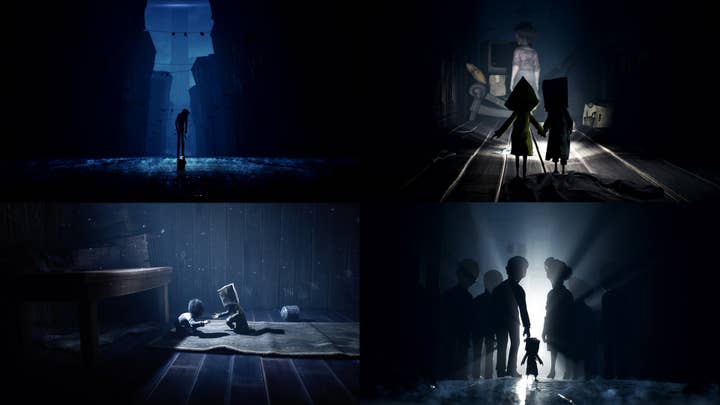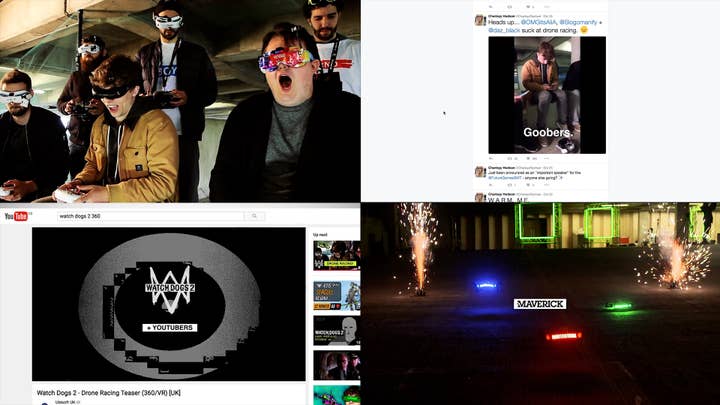How to engage fans before launch
Maverick Media's Andy Hammond details his approach to developing marketing ideas
You've worked for months, or probably years, on a game and it's time to share it with the world. You want everyone to get as excited about it as you are, but how do you communicate to your audience all of the wonderful opportunities that exist within this new experience you've created?
Everyone has their own unique way of developing great ideas that engage audiences so that they get as excited about this new release as you are, and this is true of myself and all of my colleagues at Maverick.
In fact, one of the few consistencies we agree on is that, when it comes to having ideas, it needs to be personal. So, in that vein, the process I set out below is anchored in my own particular approach to developing ideas -- and I would encourage you to develop a process that works for you.
Research
Every project begins with a brief. At first glance, this can seem like a daunting mission, beginning with only a list of deliverables and a blank page. Ultimately though, the task is always one of communication. How do we communicate everything that needs to be conveyed to our audience?
Instead of focusing on the finish line, give yourself the freedom to explore, without knowing where it will lead
The massive question of: "How will I tell all this to an audience and not be boring?" isn't one that can be answered in one fell swoop right at the start. If I were to try and leap to the end goal from the start line like that, I would creatively trip up and land flat on my face.
Instead of focusing on the finish line, give yourself the freedom to explore, without knowing where it will lead. You can do this by breaking the task down into much smaller questions.
- Who is the audience?
The gaming audience is now much more diverse. For example, looking across games like June's Journey that target older females, to games like Warhammer that are pitched at younger males, or to IP such as Pokémon that need to speak to a broad range, the approach will need to be specific to each.
- Where are they?
We live in the 21st century with a seemingly endless number of platforms to explore, each with their own unique offerings, from traditional TV to YouTube, Instagram, TikTok and beyond.

- When is the game launch?
Try to think about what else is occurring around this time, be it events or news, and what your marketing materials might look like in context.
- What is the client most proud of about their game and why?
When working with a client to promote their game, I want to learn why they made it. Sync your creative thought process to the client's as much as possible.
Align the brand and the audience
It is in this research phase that we find there is a sacred common ground between the developer and the audience. A wide-open space on which to build the foundations of a creative approach that can house everything that's required.
For instance, when developing the campaign for Little Nightmares 2, we decided early on that we wanted to emphasise the creepy, suspenseful atmosphere that is achieved so brilliantly in the game.
Characters and environments in this game are as gothic as they are gorgeous. It's something the developers received a lot of praise for in audience feedback. Fans of this franchise enjoy that unsettling feeling, treating the game as a way to test their nerves. We wanted to tap into that much-loved atmosphere in our marketing efforts.
We also researched the developer's ethos around the game -- and understood their desire to create space for the audience's imagination by leaving things deliberately oblique or incomplete.

This phase is one of exploration and understanding. It doesn't always offer the solution to the bigger problem -- especially in the case of new IPs, which do not have an existing audience relationship -- but it will always stimulate and inform what happens next.
Do your research, talk to your client, watch how your audience reacts, and finally bring your findings into the creative process. Weave everything people love about the game into your campaign.
Experiment and play
Now it's time to start coming up with content ideas. The reality is, a few ideas have probably sprung up during the research phase, but this is where a more concerted effort is made. We put pen to paper, make connections, and join two or more pieces of the puzzle from above to see if we can form a coherent launch campaign.
My favourite thing to do is to chat with colleagues. Group brainstorms are a great opportunity, not only to exchange and build on ideas, but to see what resonates. We make jokes, discuss thoughts and essentially just have fun, keeping note of anything that gets us excited.
Group brainstorms are a great opportunity, not only to exchange and build on ideas, but to see what resonates
For instance, the idea of developing a full drone racecourse event for Watch Dogs 2 was one that had us all instantly buzzing, so we held onto this idea until we were ready to test it out against the campaign requirements.
This stage requires you to not get too attached to an idea too soon, but it's also smart not to throw anything out too early either, in case it can become relevant later on. Strong campaigns can often result from combining different composite elements that emerge from this experimentation phase.
Everyone will probably approach this stage in a different way, but I've found that the one essential ingredient here is time. You might be on a deadline, but don't rush ideas or panic. Just for a short while, try to give yourself and your team the space to create.
Strategy
I don't particularly like the word strategy. Instead, I just like to think of this as understanding the context.
When working with clients from all over the world, with unique brands, fan bases and different cultures, it's important to understand the perspective of the audience you're trying to reach.
It's important to understand the perspective of the audience you're trying to reach
For Watch Dogs 2 this is where we brought the drone racecourse idea to life, focusing on and developing the elements that made it suit the campaign goals.
It was the thought of bringing elements from the game concept into real life that had excited us, as drones play a large part in Watch Dogs 2. We decided to do this by recruiting influencers and challenging them to learn the skills of FPV drone racing in order to overcome various technical challenges and races.
To do this effectively, the audience needed to be a part of the whole journey, so we devised a campaign strategy of pre-event, event and in-event activity that covered each influencers' journey, from initial mysterious recruitment to FPV drone expert. By engaging audiences with the fun via the influencers' own channels, we amplified the scope of the campaign.

In terms of advice to creatives, we'd always suggest trying to understand what the 'map of the world' looks like to your audience. Find where they get their content, and when, then make sure your own messaging is part of this media diet.
With the wide variety of different destinations that audiences can go to now for their content, it's important to consider how best to reach the people you are trying to speak to. The great thing is that this means there are a host of new opportunities now for the different kinds of experiences that you can create.
Aligning with community or industry events is another one of these opportunities. In all likelihood, big annual game shows like E3, PAX or Gamescom will already have tracks or theatres tailored to your audience.
Many eyes in the gaming world are on these events (virtual or otherwise), so it can boost your reach massively to include messaging to those that fit into your launch schedule. This is especially true if the game you're working on is supported by a platform partner like Xbox, Playstation, Steam or the Epic Games Store. Some game launch campaigns are even woven around a particular industry event or tournament, making it the centre of a game reveal.
Get excited
Every step above represents a journey of discovery and, just as each game is new, any associated advertising material should feel fresh and exciting too. It's human nature to enjoy discovering things, and when we discover something new, we'll share it.
The best way to appeal to that joy of discovery in others, is to allow ourselves to be led by that same feeling throughout production. Ultimately, everyone has their own approach to the creative process, and that's half the fun.
So, if you want to engage fans before the launch of a game, don't be afraid to follow your instincts, try something new and enjoy the process!
Andy Hammond is creative director at Maverick Media. He specialises in creative campaigns for the video games sector, from indie developers to AAA publishers across a global stage. He oversees ideas, scripts, storyboards, animatics and presentations for TVCs and online media.
